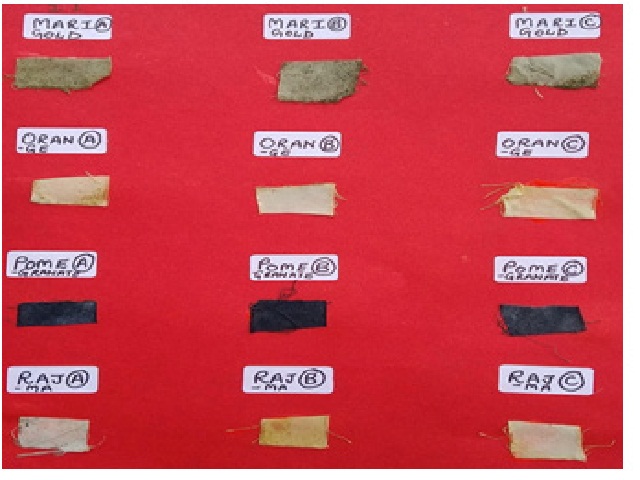Colouring Properties of Plant Pigments on Fabric: Survey on Preference for Antimicrobial Naturally Dyed Mask
DOI:
https://doi.org/10.5530/ctbp.2021.6.10Keywords:
Natural dyes, Mordanting, Cotton cloth, Antimicrobial propertiesAbstract
Synthetic dyes have high fastness property and are stable under diverse conditions but over time it is seen that they are toxic to the environment and some are carcinogenic. Dyes derived from natural sources like tartrazine, cochineal red and sunset yellow may cause allergies when used alone or in a combination. Some of the colourants that had been approved by the Food and Drug Administration for use in various industries like food, pharmaceuticals, cosmetics are found to promote cancer. The purpose of the present study is to extract natural dyes from peel of fruits and vegetables, flowers and study the effect of different mordanting techniques (premordanting, simultaneous mordanting, post-mordanting) on dyeing, The extracts were applied as direct dyes in the presence of mordants. Dyeing of cotton cloth was performed using extracts of Pomegranate peel (Punica granatum), Orange peel (Citrus sinensis), Marigold flowers (Tagetes erecta), Kidney bean seed coat (Phaseolus vulgaris). Colour strength, shade and fastness properties of the dyes have been tested. In pre and post mordanting, colour change was observed in Marigold and Pomegranate. In simultaneous mordanting, colour change was seen in Marigold, Pomegranate, Orange peel and Kidney bean. The obtained results have shown the dyeing potential of organic wastes as a source for cotton dyeing. Using waste as a source of natural dyes will help in reducing the environmental pollution. Our studies on market research for demand led us to the conclusion that there is demand for comfortable environmental friendly mask having increased functional properties.



